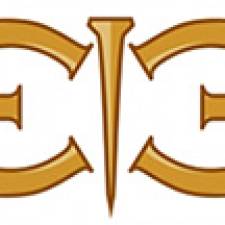
by Acacia Courtney
First of all – what exactly is an OTTB? An “off-the-track Thoroughbred” is a Jockey Club-registered Thoroughbred horse that was previously racing or in training to race, and has since been retired. Injury, lack of talent, and old age are examples of reasons that can result in a horse being retired from the track.
What does an OTTB do once he/she is retired? Well, that’s where you all come in. OTTBs have been known to transition into successful show horses in hunter/jumper, dressage, and other styles. They can also be trained as lesson horses, companion animals, or even for therapeutic riding programs. Like people, horses have their own individual personalities, and some are better suited to a certain job than others are.
Thoroughbred aftercare is becoming a bit more “fashionable” than it was before, and this is great news for the horses. This does not mean that you should reconsider adopting an OTTB because “everyone is doing it” and you don’t want to be looked at as basic. Sometimes it’s totally OK to jump on the bandwagon. It does mean, however, that you will have to be a little more careful and will have to do your research before looking for your newest equine project or BFF.
At the tender, naïve age of 18 I thought it would be a good idea to start a nonprofit dedicated to retraining OTTBs once their racing days were over. It certainly was a good idea, but it did end up being a much greater undertaking than I had initially expected. Racing for Home Inc. has been one of my most rewarding endeavors, but working with OTTBs is not without challenges.

That’s why I wanted to write “The Beginner’s Guide to Adopting an OTTB” – so that anyone with an empty stall and an open heart can bring home their own ex-racer. This is also a good opportunity for those who don’t know anything about OTTBs to see what really happens with all the ins and outs of Thoroughbred aftercare. The more we know, the more we can help.
And, Thoroughbreds are like potato chips (or Girl Scout cookies, depending whether you’re sweet or salty). You can’t take just one.
You’ve decided you want to adopt an off-the-track Thoroughbred. Here’s your (super) beginner’s (very short) guide:
1) Research the breed – the most important thing is to know what you’ll be working with. Thoroughbreds are selectively bred for speed, stamina, and a variety of other factors that make them formidable on the racetrack, and they are not usually suitable for beginning riders. Thoroughbreds are often thought of as “hot” and hard to handle, but this is a myth (although there are always some outliers. We all have that one friend … ). Extremely intelligent and willing to please, OTTBs are perfect for your next pet project. The New Vocations website offers a great deal of insight into the Thoroughbred breed.
2) Figure out where you want to get your horse from – as I am based in the Northeast, I got my first OTTB directly off the track at Suffolk Downs in Massachusetts, and found out that she was available through an organization called CANTER (Communication Alliance to Network Thoroughbred Ex-Racehorses), which has different chapters all over the country, and serves as a type of middleman between the racetrack and a prospective adopter. A group such as CANTER could help you find exactly what you’re looking for. Or, when you say that the last thing you want is chestnut Thoroughbred mare, CANTER can help you find a chestnut Thoroughbred mare that you will fall madly in love with (cough cough, I’m looking at you, Mom).
3) Make your plan of attack – Many OTTBs do not cost a lot, if anything, to adopt once they have been retired, but of course, taking care of a horse for the rest of its life is where things do get pricey. Once you find your dream horse, what are you going to do with him or her? Most racehorses know how to run and turn left. I recommend that when you get them off the track, you start by going right (it’s harder than it sounds. Trust me). From there, it’s up to you. Jumping, dressage, eventing, therapeutic riding programs, or your new moneymaking lesson horse – your OTTB will be the best investment you ever made.
4) Pay it forward – Thoroughbreds are beautiful, smart, talented animals, and it’s important to make sure that they’re taken care of once their racing days are over, regardless of how much money they made on the track. Sharing OTTB stories and links, or supporting organizations such as the Thoroughbred Retirement Foundation and Old Friends, makes it possible for us to appreciate the real celebrities. Just as we are ambassadors for the sport of racing, we can all be ambassadors for the horses themselves. For without the horses, there would be no racing.
Oh, and for anyone who was wondering. It’s been nearly six years and my family still has that chestnut Thoroughbred mare. She knows how to beg for carrots by raising her hoof in “give the paw” style, and is Queen Bee at our barn. Her name is Diva (Palace Diva is her Jockey Club name), and I have never met a more aptly named horse. And I wouldn’t trade her for the world.
Happy riding!
This article originally appeared on America's Best Racing and is published here with permission. EIE proudly has the largest collection of resources for Retirement and Rehoming for horses. Find your next OTTB or other Equine friend in our section for Retire & Rehome.













